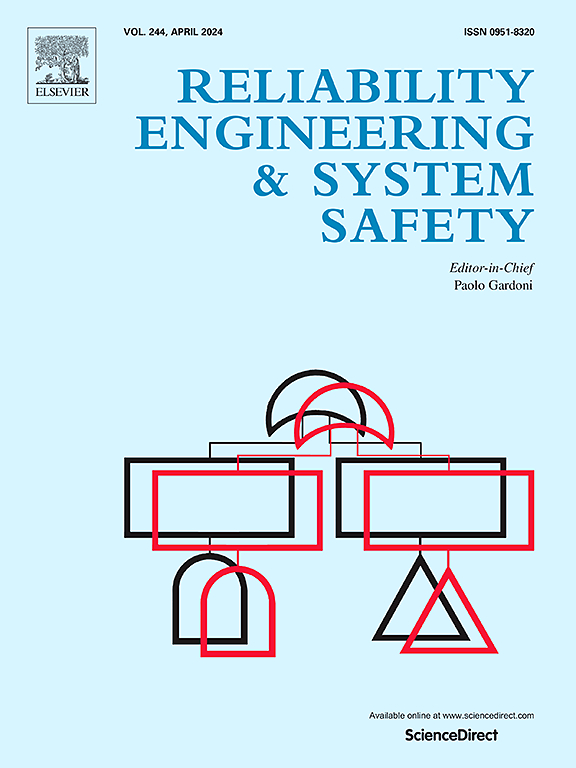Enhancing aircraft reliability with information redundancy: A sensor-modal fusion approach leveraging deep learning
IF 9.4
1区 工程技术
Q1 ENGINEERING, INDUSTRIAL
引用次数: 0
Abstract
Redundancy design is a critical way to enhance the reliability and safety of aircraft. However, hardware redundancy significantly increases manufacturing costs and system complexity, while analytical redundancy faces challenges in establishing accurate mathematical models. To address these issues, this paper proposes an information redundancy method for flight data based on sensor-modal fusion. This method leverages deep learning networks to learn the complex coupling relationships between flight parameters from a vast amount of historical flight data. In this respect, a mapping model for flight parameters is established to replace traditional mathematical models used for analytical redundancy. First, the traditional sliding window process is improved by proposing a Fibonacci sampling to balance computational resources and historical view length. Next, a sensor-modal fusion-based prediction model is designed to avoid spatial interactions among sensor features during feature extraction. Furthermore, a sensor attention module and a modal attention module is employed to improve the interpretability of the model. Finally, a Lebesgue evaluation metric is introduced to address ineffective assessment under state balance conditions. The proposed method was validated using real flight data. The results demonstrate that the Lebesgue mean absolute error remained below 1.4 %, outperforming all comparative methods and affirming the effectiveness and superiority of the proposed method. Furthermore, this paper investigated the potential of information redundancy in enhancing aircraft reliability.
利用信息冗余增强飞机可靠性:利用深度学习的传感器模态融合方法
冗余设计是提高飞机可靠性和安全性的重要途径。然而,硬件冗余大大增加了制造成本和系统复杂性,而分析冗余在建立精确的数学模型方面面临挑战。针对这些问题,本文提出了一种基于传感器-模态融合的飞行数据信息冗余方法。该方法利用深度学习网络从大量的历史飞行数据中学习飞行参数之间复杂的耦合关系。为此,建立了飞行参数映射模型,取代了传统的分析冗余数学模型。首先,通过提出斐波那契采样来平衡计算资源和历史视图长度,对传统的滑动窗口过程进行改进。其次,设计了基于传感器模态融合的预测模型,以避免特征提取过程中传感器特征之间的空间交互。此外,采用传感器注意模块和模态注意模块来提高模型的可解释性。最后,引入勒贝格评价指标,解决状态平衡条件下评价无效的问题。利用实际飞行数据对该方法进行了验证。结果表明,Lebesgue平均绝对误差保持在1.4%以下,优于所有比较方法,证实了所提出方法的有效性和优越性。此外,本文还探讨了信息冗余在提高飞机可靠性方面的潜力。
本文章由计算机程序翻译,如有差异,请以英文原文为准。
求助全文
约1分钟内获得全文
求助全文
来源期刊

Reliability Engineering & System Safety
管理科学-工程:工业
CiteScore
15.20
自引率
39.50%
发文量
621
审稿时长
67 days
期刊介绍:
Elsevier publishes Reliability Engineering & System Safety in association with the European Safety and Reliability Association and the Safety Engineering and Risk Analysis Division. The international journal is devoted to developing and applying methods to enhance the safety and reliability of complex technological systems, like nuclear power plants, chemical plants, hazardous waste facilities, space systems, offshore and maritime systems, transportation systems, constructed infrastructure, and manufacturing plants. The journal normally publishes only articles that involve the analysis of substantive problems related to the reliability of complex systems or present techniques and/or theoretical results that have a discernable relationship to the solution of such problems. An important aim is to balance academic material and practical applications.
 求助内容:
求助内容: 应助结果提醒方式:
应助结果提醒方式:


